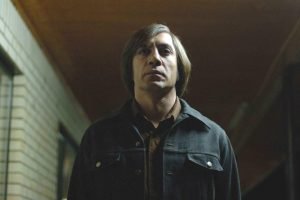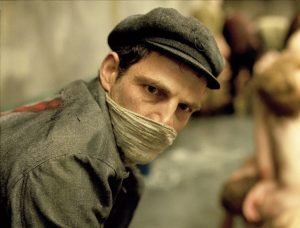Why Martin Scorsese’s ‘Hugo’ is a Masterpiece of Filmmaking
When it comes to filmmaking, Martin Scorsese is a true master of his craft. Throughout his career, he has directed countless films that have become iconic in cinema history. One of his lesser-known works, “Hugo,” is a true masterpiece of filmmaking that deserves more recognition. Released in 2011, “Hugo” tells the story of a young orphan boy who lives in a Paris train station and has a passion for fixing and maintaining clocks. In this article, we will explore why Martin Scorsese’s “Hugo” is a masterpiece of filmmaking and why it deserves a spot on your must-watch list.
When it comes to filmmaking, Martin Scorsese is a true master of his craft. Throughout his career, he has directed countless films that have become iconic in cinema history. One of his lesser-known works, “Hugo,” is a true masterpiece of filmmaking that deserves more recognition. Released in 2011, “Hugo” tells the story of a young orphan boy who lives in a Paris train station and has a passion for fixing and maintaining clocks. In this article, we will explore why Martin Scorsese’s “Hugo” is a masterpiece of filmmaking and why it deserves a spot on your must-watch list.
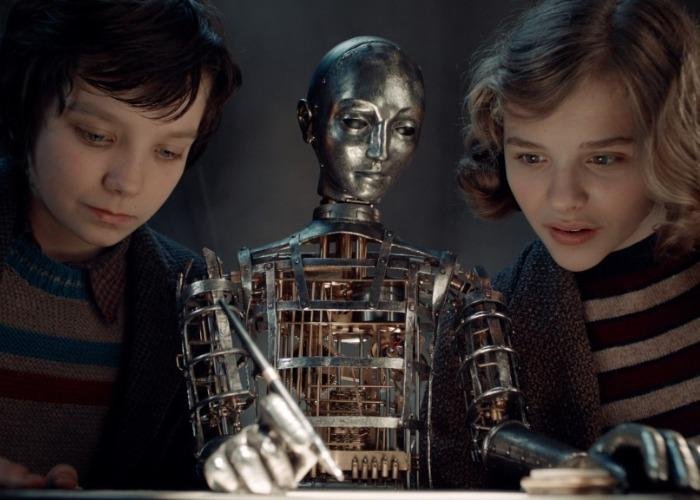
Section 1 – Introduction
In this article, we will delve into the incredible world of Martin Scorsese’s masterpiece, Hugo. This film, released in 2011, is a true masterpiece that showcases Scorsese’s incredible talent as a director. From the stunning visuals to the incredible performances by the cast, Hugo is a film that demands to be seen on the big screen. In this section, we will explore the plot of the film, as well as some background information about the making of the movie. So sit back, grab some popcorn, and get ready to explore the world of Hugo.
Introduce the topic of the post and briefly explain who Martin Scorsese is and what “Hugo” is about
In this post, we’ll be discussing the cinematic masterpiece that is Martin Scorsese’s “Hugo.” For those unfamiliar with Martin Scorsese, he is an American film director, producer, screenwriter, and actor who has been active in the industry since the 1960s. “Hugo” is a 2011 film directed by Scorsese and based on the novel “The Invention of Hugo Cabret” by Brian Selznick. The film tells the story of a young boy named Hugo who lives in a Paris train station in the 1930s and the adventures he goes on to uncover a mystery about his father and a mysterious automaton. The film was praised for its stunning visuals, engaging storytelling, and overall mastery of the craft by its director, Martin Scorsese.
Section 2 – Scorsese’s Vision for the Film
In Section 2 of our article about Martin Scorsese’s Hugo masterpiece, we delve into the director’s vision for the film. Scorsese’s passion for cinema is evident throughout the movie, as he takes us on a journey through the history of film. He masterfully blends live-action with animation to create a magical world that truly captures the essence of the story. Scorsese’s attention to detail is impeccable, from the stunning visuals to the intricate set designs. It’s clear that he poured his heart and soul into this project, and the end result is a true cinematic masterpiece that will be remembered for years to come.
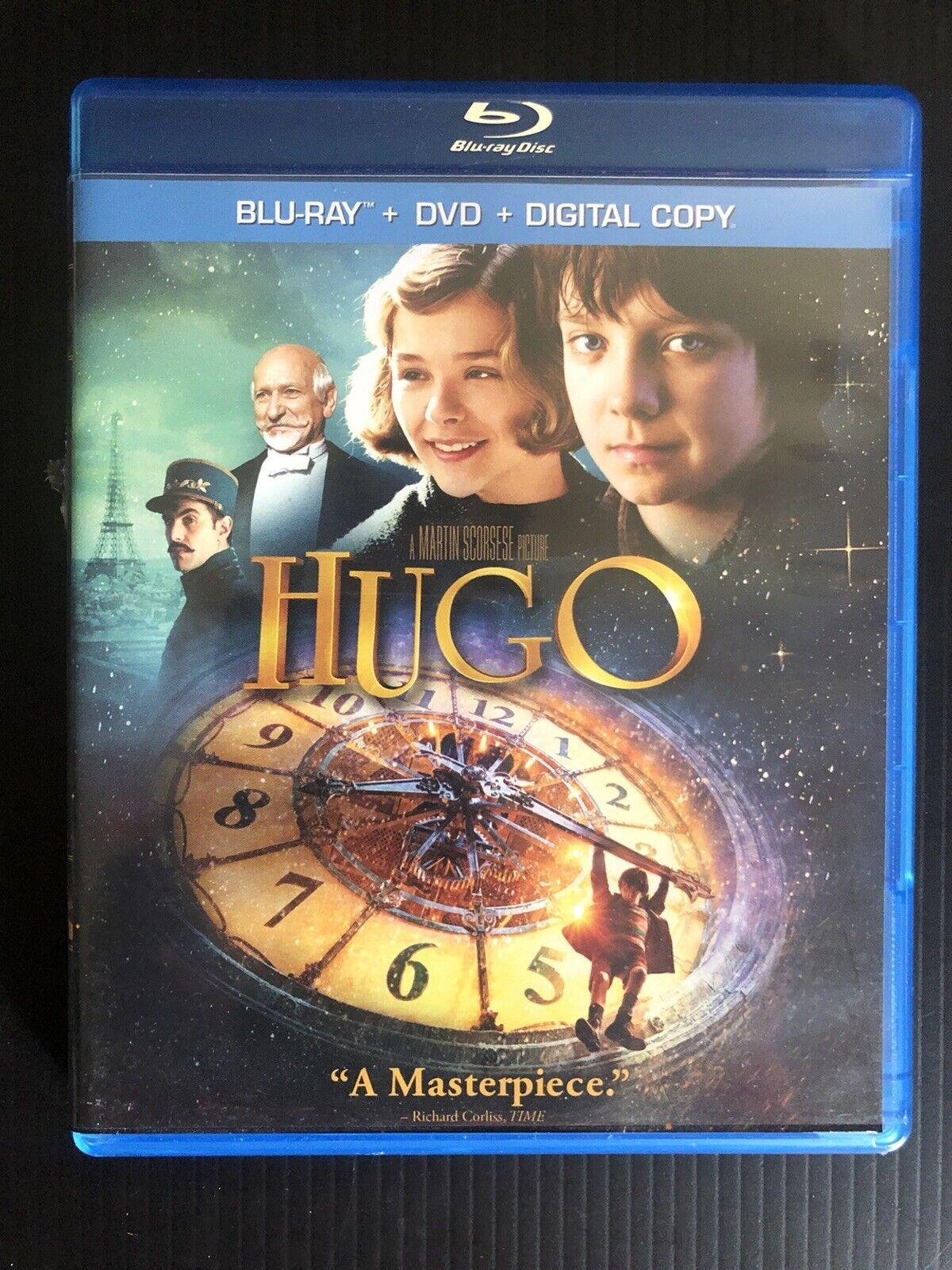
Discuss Scorsese’s vision for “Hugo” and how he wanted to bring the story to life on the big screen
Martin Scorsese’s vision for “Hugo” was nothing short of breathtaking. He wanted to bring the story to life on the big screen in a way that would capture the imagination of audiences everywhere. Scorsese’s passion for the world of cinema and its history is evident in every frame of the movie. From the stunning visuals to the intricate details of the sets, Scorsese’s attention to detail is second to none. His use of 3D technology was also a unique touch, allowing the audience to become fully immersed in the world of Hugo Cabret. Overall, Scorsese’s vision for “Hugo” was a true masterpiece, showcasing his skill as a director and his love for the art of filmmaking.
Section 3 – The Cast of “Hugo”
In Section 3 of our article about Martin Scorsese’s Hugo masterpiece, we dive into the incredible cast of this film. From the talented Asa Butterfield portraying the young orphan Hugo, to the legendary Ben Kingsley as Georges Méliès, the range of performances in this movie is truly impressive. We also delve into the supporting cast, including Chloe Grace Moretz, Sacha Baron Cohen, and Emily Mortimer, who all add their own touch of brilliance to the film. With such a stellar lineup of actors, it’s no wonder Hugo was nominated for eleven Oscars and is considered a must-watch for any cinephile.
Introduce the cast of “Hugo” and their roles in the film
In Martin Scorsese’s masterpiece “Hugo,” a star-studded cast brings the beloved characters to life. Asa Butterfield stars as the titular character, Hugo Cabret, a young orphan living in a bustling train station in 1930s Paris. Joining him is the legendary Sir Ben Kingsley as Georges Méliès, a pioneering filmmaker whose career has hit a rough patch. Chloe Grace Moretz shines as Isabelle, the adventurous young girl who becomes Hugo’s partner in crime. Sacha Baron Cohen brings his signature comedic flair as the station inspector trying to catch the mischievous Hugo. With such a talented cast, “Hugo” is a must-see film for cinema, movies and actors enthusiasts.
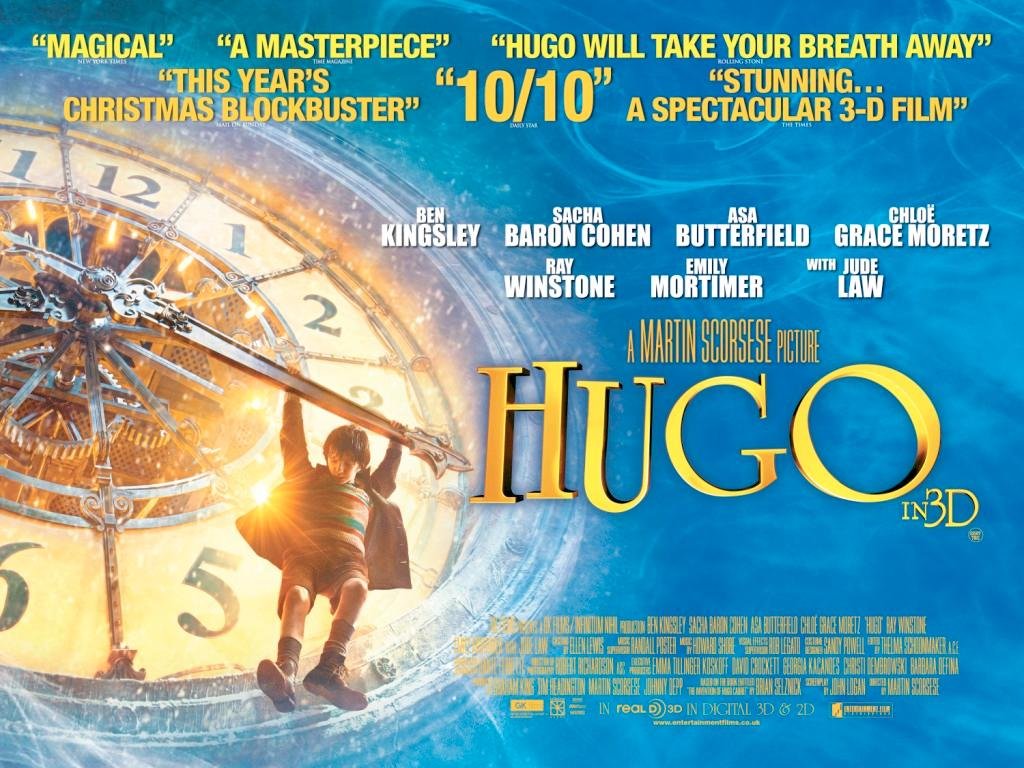
Section 4 – The Cinematography of “Hugo”
Section 4 of Martin Scorsese’s “Hugo” focuses on the extraordinary cinematography that makes this movie a true masterpiece. The camera movements and angles are impressive, capturing the magic of the story and the beauty of the setting. From the opening shot of the clock tower to the stunning recreation of Georges Méliès’ studio, every frame is a work of art. The use of 3D technology enhances the experience, immersing the audience in the world of the film. The cinematography of “Hugo” is a testament to Scorsese’s love and deep understanding of cinema as an art form.
Discuss the stunning cinematography in “Hugo” and how it adds to the overall visual masterpiece
The stunning cinematography in Martin Scorsese’s “Hugo” truly adds to the overall visual masterpiece of the film. From the intricate set design to the use of 3D technology, every shot is meticulously crafted to transport the audience into the magical world of the story. The use of wide-angle shots and sweeping camera movements enhances the feeling of wonder and adventure, while the rich color palette and use of natural light create a sense of depth and realism. The attention to detail in every frame is a testament to the skill and creativity of the filmmakers, making “Hugo” a true cinematic masterpiece.
Section 5 – The Music of “Hugo”
Section 5 of “Martin Scorsese’s Hugo Masterpiece” is all about the music in the film. The score was composed by Howard Shore and it perfectly captures the whimsical and magical feeling of the movie. Shore used a mix of orchestral pieces and smaller ensembles to create a unique sound that perfectly suited the film’s 1930s Paris setting. In addition, the film features a number of classic songs from the 1930s and 1940s, adding to the overall nostalgic feel. The music in “Hugo” is truly a standout feature of the film and adds to its overall charm and beauty.
Explain how the music in “Hugo” enhances the storytelling and elevates the emotional impact of the film
In Martin Scorsese’s masterpiece “Hugo”, the music plays a crucial role in enhancing the storytelling and elevating the emotional impact of the film. The score, composed by Howard Shore, is a beautiful blend of whimsy, adventure, and heartbreak that perfectly captures the spirit of the story. The music serves as a powerful tool to immerse the audience in the film’s world and convey the emotions of the characters. From the playful and upbeat tunes during Hugo’s mischievous adventures to the haunting and melancholy melodies that accompany the film’s more poignant moments, the music in “Hugo” is nothing short of extraordinary. It is a testament to the power of music in film and adds another layer of depth to an already captivating cinematic experience.
Section 6 – The Themes of “Hugo”
Section 6 of the article on “Martin Scorsese’s Hugo Masterpiece” delves into the central themes of the movie. The film explores the power of imagination, the importance of preserving history, and the transformative nature of cinema. Scorsese’s love for cinema shines through in every frame of the movie, as he pays homage to the pioneers of filmmaking, such as Georges Méliès. The movie also features strong, multidimensional characters who undergo personal growth and transformation throughout the story. Overall, “Hugo” is a masterful film that beautifully captures the magic of cinema and its ability to transport its audience into new worlds.
Discuss the themes of “Hugo” such as the power of imagination and the importance of preserving history
In Martin Scorsese’s masterpiece “Hugo”, the power of imagination and the importance of preserving history are two themes that stand out. The film follows the story of Hugo Cabret, a young orphan who lives in a Paris train station and dreams of fixing a broken automaton that his father left him. Throughout the film, Hugo’s imagination takes him on a journey of self-discovery and he learns the importance of preserving history. Scorsese uses the story to remind us of the crucial role that cinema plays in our cultural heritage and the need to preserve it for future generations to enjoy. Overall, “Hugo” is a beautiful tribute to the power of imagination and the importance of preserving history.
Section 7 – The Visual Effects of “Hugo”
Section 7 of Martin Scorsese’s “Hugo” masterpiece dives into the exquisite visual effects that have brought the magical world of Georges Méliès to life. From the intricate clockwork machinery of the train station to the spectacular recreation of Méliès’ famous rocket launch, the visual effects in this film are nothing short of outstanding. The use of both practical and digital effects seamlessly blend together to create a world that is both fantastical and believable. Scorsese’s attention to detail and his dedication to capturing the essence of Méliès’ work shines through in every frame of this visually stunning film.
Explain how the visual effects in “Hugo” are seamlessly integrated into the film and enhance the overall experience
One of the many reasons why Martin Scorsese’s “Hugo” is a cinematic masterpiece is the way its visual effects are seamlessly integrated into the film, enhancing the overall experience. The film’s use of 3D technology and CGI brings the world of 1930s Paris to life, creating a vividly immersive and magical atmosphere. The visual effects are not merely for show, but serve to add depth and dimension to the story, creating a sense of wonder and awe that draws the viewer into the film’s world. From the intricate clockwork machinery to the bustling streets of Paris, every detail feels meticulously crafted and authentic, making “Hugo” a triumph of both storytelling and filmmaking.
Section 8 – The Reception of “Hugo”
Section 8 – The Reception of “Hugo”Upon its release, “Hugo” was met with critical acclaim and even received 11 Oscar nominations, winning five of them. Martin Scorsese‘s masterpiece was praised for its stunning visuals, intricate plot, and brilliant performances by its cast, led by Asa Butterfield and Chloë Grace Moretz. The film was also celebrated for its homage to the golden age of cinema and its use of 3D technology. Overall, “Hugo” was a triumph for Scorsese and his team, proving that the veteran director still has the ability to create cinematic magic.
Discuss the critical and box office reception of “Hugo” and why it is considered a masterpiece
Martin Scorsese’s “Hugo” was released in 2011 and received critical acclaim for its stunning visuals, heartfelt story, and masterful direction. The film was based on the book “The Invention of Hugo Cabret” and told the story of a young orphan boy who lives in a Paris train station and becomes involved in a mystery surrounding a mechanical man. “Hugo” won five Academy Awards, including Best Cinematography and Best Visual Effects, and was praised for its use of 3D technology. Despite its box office disappointment, “Hugo” is still considered a masterpiece and a testament to Scorsese’s passion for cinema and storytelling.
Section 9 – Scorsese’s Legacy
Section 9 of our article on “Martin Scorsese Hugo Masterpiece” delves into the director’s legacy. Scorsese has been a mainstay in the film industry for decades, and his influence can be seen in many of the great films of the past few decades. From his work with Robert De Niro in classics like “Taxi Driver” and “Goodfellas,” to his more recent films like “The Departed” and “The Wolf of Wall Street,” Scorsese has proven himself to be a master storyteller. His contributions to the world of cinema will continue to be felt for years to come, and we’re excited to see what he has in store for us in the future.
Reflect on Scorsese’s legacy as a filmmaker and how “Hugo” adds to his already impressive body of work
Martin Scorsese is undoubtedly one of the greatest filmmakers of our time, having left an indelible mark on the cinematic landscape with his impressive body of work. With the release of “Hugo,” Scorsese has demonstrated yet again why he is such a master storyteller. The film, which is a stunning adaptation of Brian Selznick‘s novel “The Invention of Hugo Cabret,” showcases Scorsese’s unique ability to transport audiences to another time and place. The film is a visually stunning masterpiece that showcases Scorsese’s mastery of the craft, and is a testament to his enduring legacy as one of the greatest filmmakers of all time.
Section 10 – Conclusion
In conclusion, Martin Scorsese‘s Hugo is a cinematic masterpiece that showcases the director’s mastery over the medium. The film is a visual spectacle that transports viewers to another world, while also telling a heartwarming story about the power of imagination and determination. From the stunning visuals to the brilliant performances by the cast, Hugo is a must-watch for any cinema lover. Scorsese proves once again why he is one of the greatest filmmakers of our time, and this film will surely be remembered as one of his finest works. If you haven’t already, make sure to add Hugo to your must-watch list.
Summarize the key points of the post and reiterate why “Hugo” is a masterpiece that should not be missed
In conclusion, “Hugo” is undoubtedly a masterpiece that should not be missed by any movie enthusiast. Directed by legendary filmmaker Martin Scorsese, this film brilliantly portrays the story of an orphan boy named Hugo who lives in a Paris train station and discovers a secret world of cinema. The film is not only visually stunning but also emotionally engaging, with outstanding performances from the cast. Overall, “Hugo” is a must-watch movie that encapsulates the magic and wonder of cinema and its importance in our lives.
For more information about Martin Scorsese Hugo Masterpiece, including movie details, cast information, etc..
check out the filmaffinity page.

